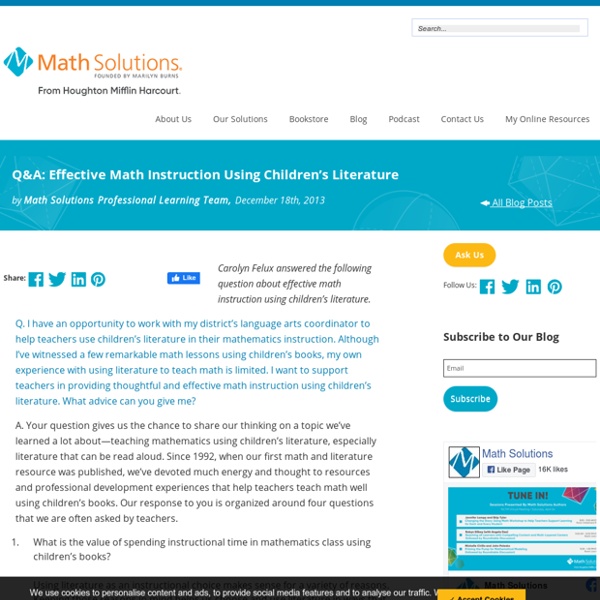Print and Play Math Games! - Susan Jones
My first graders have always L-O-V-E-D games and so do I! As a teacher, it is the perfect way to engage your learners in skill and have them practice, practice, practice. When students are highly engaged, not only are they learning but it gives you an opportunity to meet with students who may need a little more help or some enrichment in a particular area. I am a fan of a simple and engaging games that your students can play over and over and over so I created a line of games that I am over-the-moon excited about called:Print, Play, LEARN!
Using Stories to Teach Math
When I was an elementary classroom teacher, I always welcomed activities that could serve dual duty—combining the goals of two subjects at once, in a seamless whole. Such activities streamlined my work efforts (so important for busy teachers), and they used valuable classroom time to the fullest. With the current strong emphasis on literacy and math, it makes great sense to combine these two subjects. Three Ways to Use Literacy Activities to Teach Math Skills
Math Lesson Plans
In this section you will find Math lessons from kindergarten through high school. Lessons come with options for modifications and differentiation in order to help you cater to the needs of your studs. Many of the lessons are aligned to Common Core State Standards. With that said, these lessons can easily be integrated into an existing curriculum Math curriculum for any grade. The lessons you see here were submitted by real teachers working in schools across the United States.
10 Strategies For Connecting Literacy And Math
contributed by Linda Kardamis, Teach4TheHeart.com With the rise of new trends such as a flipped classroom and whole brain teaching, there is an emphasis on getting students more actively involved in learning in the classroom. And whether or not you choose to fully embrace either of these methods, we can all agree that we want students participating as much as possible. When students are actively participating, they are learning. In math classes, we typically involve students in the problem-solving side, but we don’t often expect them to provide explanations.
7 Great Apps For Math: A Grade-by-Grade Guide
Did you know, letting your child use your smart phone or tablet can actually be beneficial. Boosting important skills in math, literacy, and science can be turned into a fun (and effective) game all with the help of apps. Check out seven of our favorite math apps below and give them a try with your little learner. Montessori Numbers Designed in France, this app helps children grasp the association between quantities and numerals and even introduces decimals along with addition and subtraction.
Maths, story and dance: an Indigenous approach to teaching
A new method using culture-based storytelling to teach maths to Aboriginal children is reaping results. Aboriginal school children on average lag two years behind their non-Indigenous peers when it comes to maths, but according to one expert we can bridge the gap by paying better attention to culture. "Maths and science are very much seen, from an Aboriginal point of view, as a white fella thing," said Dr Christopher Matthews, of Griffith University, who is just one of a handful of Aboriginal people to earn a PhD in mathematics.
Bridging Literature and Mathematics by Visualizing Mathematical Concepts
Overview Featured Resources From Theory to Practice Math-related, informational books, like Steve Jenkins' Actual Size and David M. Schwartz' If You Hopped Like a Frog, provide the focus for this lesson, which connects reading, writing, math, and science. By exploring the life-size images in Actual Size and the comparisons to familiar objects in both books, students visualize measurements and mathematical proportions, which, in turn, teaches ratio.
A Match Made in the Classroom!
If you are seeking a new way to add relevancy to your classroom math activities, the answer may be right in your school library! Literature is the ideal vehicle to help your students see the importance of numbers in their daily lives. Included: Author Marilyn Burns is one educator who says, "Math and literature together? Why not!" She shares her thoughts with Education World.



